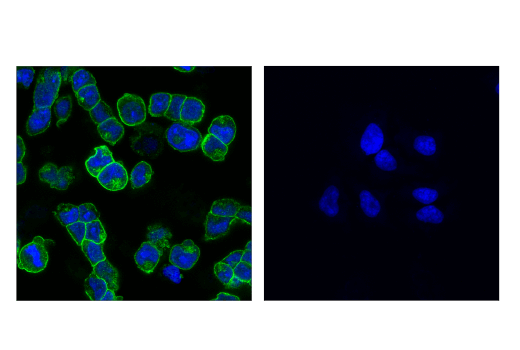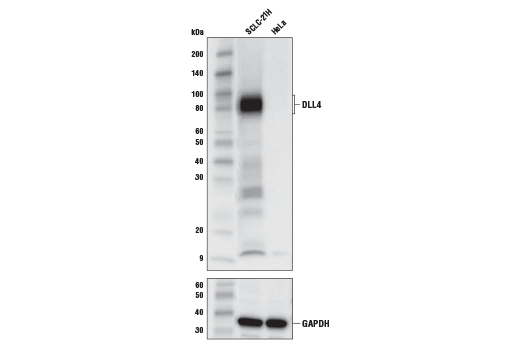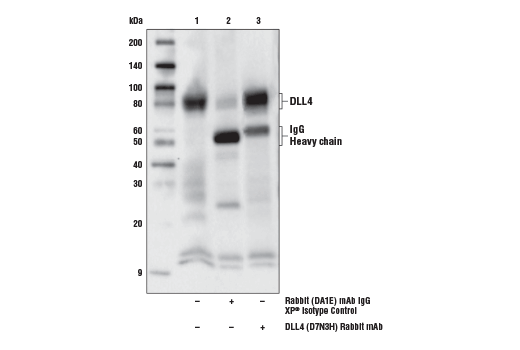 全部商品分类
全部商品分类


Monoclonal antibody is produced by immunizing animals with recombinant protein specific to the carboxy terminus of human DLL4 protein.


Product Usage Information
| Application | Dilution |
|---|---|
| Western Blotting | 1:1000 |
| Immunoprecipitation | 1:200 |
| Immunofluorescence (Immunocytochemistry) | 1:400 |



Specificity/Sensitivity
Species Reactivity:
Human




Supplied in 10 mM sodium HEPES (pH 7.5), 150 mM NaCl, 100 µg/ml BSA, 50% glycerol and less than 0.02% sodium azide. Store at –20°C. Do not aliquot the antibody.


参考图片
Confocal immunofluorescent analysis of SCLC-21H cells (left) and HeLa cells (right) using DLL4 (D7N3H) Rabbit mAb (green). Blue pseudocolor = DRAQ5® #4084 (fluorescent DNA dye).
Western blot analysis of extracts of SCLC-21H and HeLa cells using DLL4 (D7N3H) Rabbit mAb (upper) and #5174 GAPDH (D16H11) XP® Rabbit mAb. As expected, HeLa cells are low or negative.
Immunoprecipitation of DLL4 protein from SCLC-21H cell extracts. Lane 1 is 10% input, lane 2 is Rabbit (DA1E) mAb IgG XP® Isotype Control #3900, and lane 3 is DLL4 (D7N3H) Rabbit mAb. Western blot analysis was performed usingDLL4 (D7N3H) Rabbit mAb.








 用小程序,查商品更便捷
用小程序,查商品更便捷




